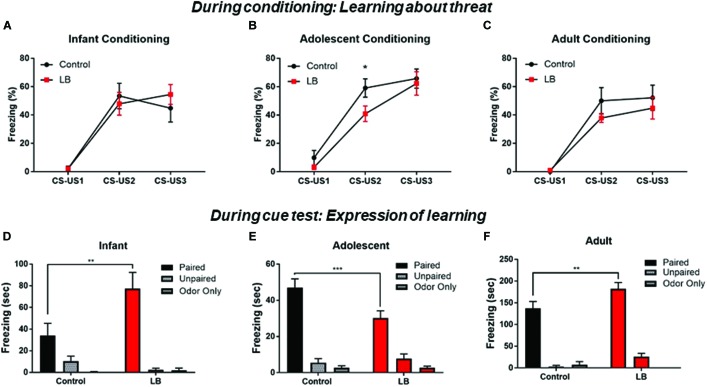FIGURE 3.
Acquisition and expression of learned threat across development. During conditioning, responses to the CS increased over consecutive CS-US pairings, a pattern indicative of learning. No statistical difference was seen between LB and control rearing as suggested by rate of learning for infants and adults (A,C), although maltreated adolescents showed some retardation of learning (B). Cue testing 24 h later in a novel environment was analyzed for percent time spent freezing to the CS at the three ages. All paired animals (control and LB) were significantly higher than unpaired and odor-only controls, although freezing to cues following maltreatment increased in infancy (D), decreased in adolescence (E) and increased in adults (F), relative to control-reared animals. ∗∗p < 0.01, ∗∗∗p < 0.001.

